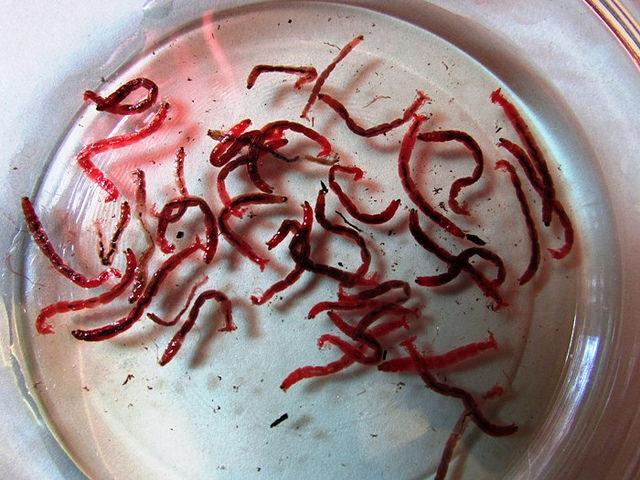Bloodworms

They are the aquatic larvae of non-biting midge flies. The midge flies will lay their eggs on the surface of your pond and the bloodworms attach themselves to solid surfaces; but will occasionally get drawn to your filter; they also love food matter floating nearby, which also might explain why they’re drawn to living in filters.
Do they live for long?
From their egg stage to adult stage, the lifespan is around 10 days to a month. Their stages include an egg phase (when they are laid), a larvae stage (the ‘Bloodworm’ stage) a pupal stage (where they head out to inhabit locations like tree holes and soil) and lastly the midge fly stage.
Are Bloodworms good or bad for ponds?
In short, bloodworms may look scary if you find them in your pond, but they’re not that bad. Fish, insects, birds and frogs will eat the bloodworms as they are high in protein and minerals. So the bloodworms are great at supplementing the diet of the wildlife in the area. Bloodworms can also clean the water by consuming the extra nutrients and algae in the pond.
On the other hand, too many bloodworms in your filter can reduce the filters effectiveness. So if you see a huge number of them, they can either be moved into the pond to be eaten or place them in moist soil. Further to this, when they enter their adult stage (the midge fly stage), they may die in high quantities which can land in your pond and cause sludge. This can be resolved by using a skimmer net to remove them.

How Do You Get Rid of Bloodworms?
There are only two main methods to remove the Bloodworms: Manual or Biological.
Manual Method: Bloodworms can be removed using a vacuum or a skimmer net. Or you can try to put a very fine cover net over the pond to dissuade midge flies from laying their eggs on the pond. If necessary, you may need to kill the midge flies before they get a chance to lay their eggs.
Biological Method: You can always add a few extra fish who will eat the Bloodworms. Bottom feeders are great, particularly Koi. Having plenty of plants around the pond helps (i.e ornamental plants, marginal plants and floating planters) as these attract other wildlife which will eat the bloodworms and the midge flies.
If you have any queries, please email us on info@pondkeeper.co.uk.